Environmental Program
Updated 2/15/2022
Protection and restoration of the environment is critical to the preservation of Tribal treaty rights and traditional cultural practices. Nearly all Tribal culture is linked in some way to a functioning ecosystem whether it be habitat for game, clean water for fish, or forests for gathering. The Natural Resources Department takes three main approaches to ensuring Tribal members have the ability to exercise their cultural practices: Restoration, Conservation, and Protection.
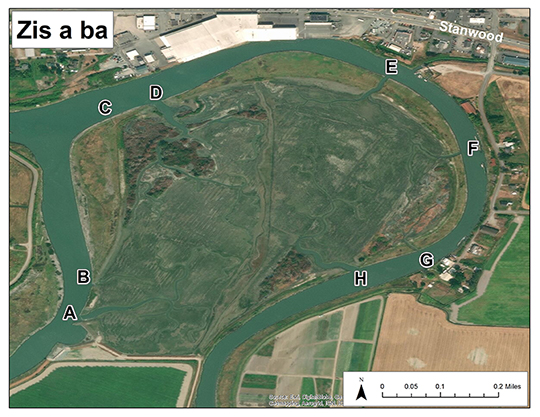
Zis a ba restoration site near Stanwood. Dike breach locations indicated by letters.
Restoration:
- Riparian Projects
- Wetland Projects
- Instream Projects
- Estuary Projects
Conservation:
- Land Acquisition
Protection:
- Timber, Fish and Wildlife
- Policy Partnerships
- Regulatory Review
Restoration
Environmental restoration has been an ongoing and cooperative effort for many years, often in partnership with other organizations who also conduct restoration. Our mission is to expand and enhance stream side forests throughout the Stillaguamish River Basin to benefit fish and wildlife. Project work sites are located on Tribal, public, and private land.
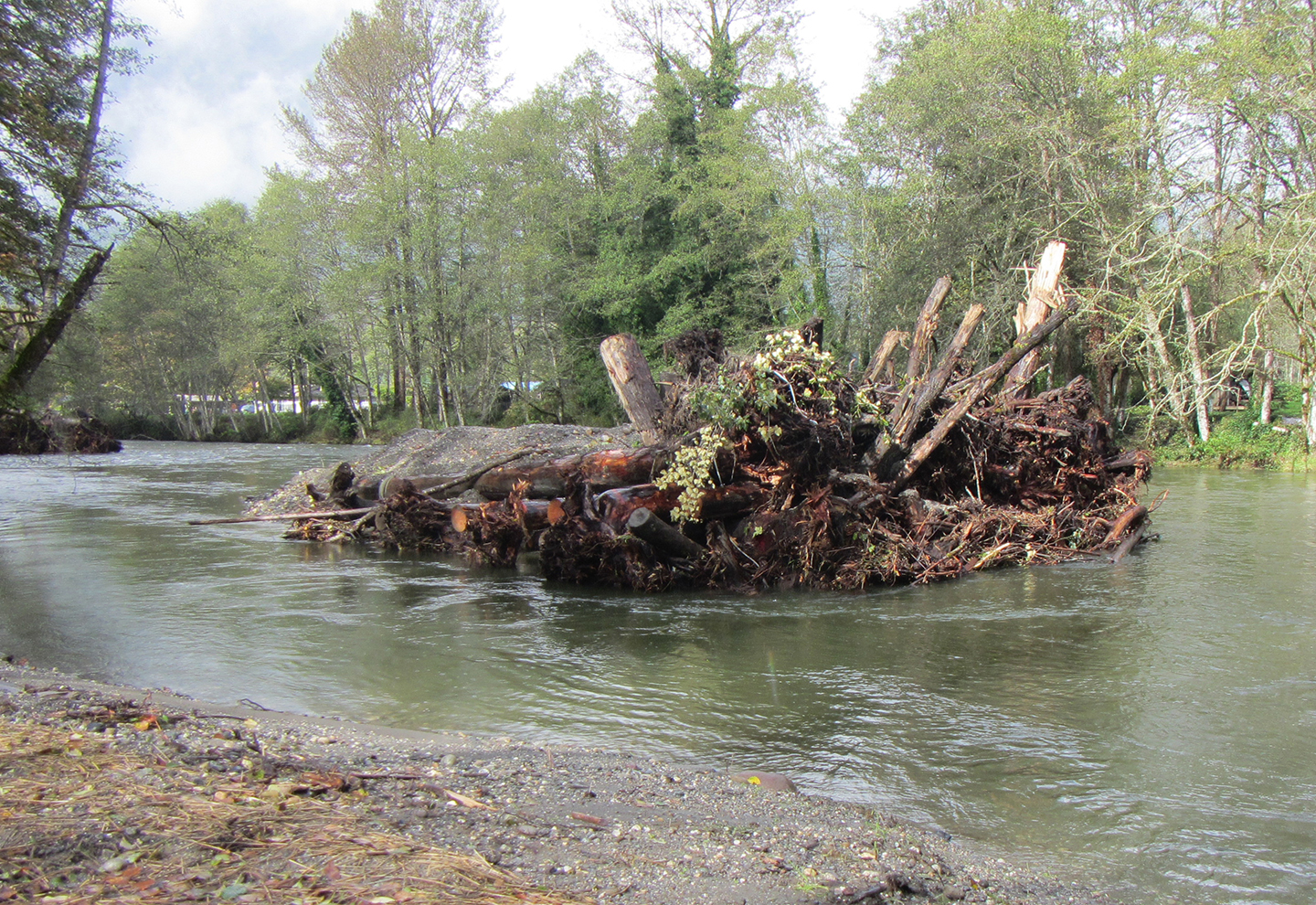
Riparian Projects
Healthy riparian (stream adjacent) forests provide benefits to fish and wildlife, and by extension, to residents of the Stillaguamish Basin.
Riparian forests are a key contributor to healthy freshwater habitat for salmon and steelhead. Riparian forests provide large woody debris for salmon to rest, hide and find food in. They also provide shade, keeping the waters cool and oxygen rich. Riparian forests also provide homes for game and non-game wildlife as well as food for animals to forage. Many plants found in riparian forests provide healthy, delicious foods and medicines for humans. As riparian forests increase, the benefits they provide will increase as well.
The activities that the riparian restoration program conducts can be summed up simply as stewardship of the land and water. Those activities include:
- Native plant seed collection
- Native vegetation plantings
- Noxious and invasive weed control
- Fence construction to exclude livestock from water bodies
- Garbage removal
If you are a concerned streamside land owner and would like to find ways to improve your property’s fish and wildlife habitat, please contact Jason Anderson at janderson@stillaguamish.com or 360-631-7391.
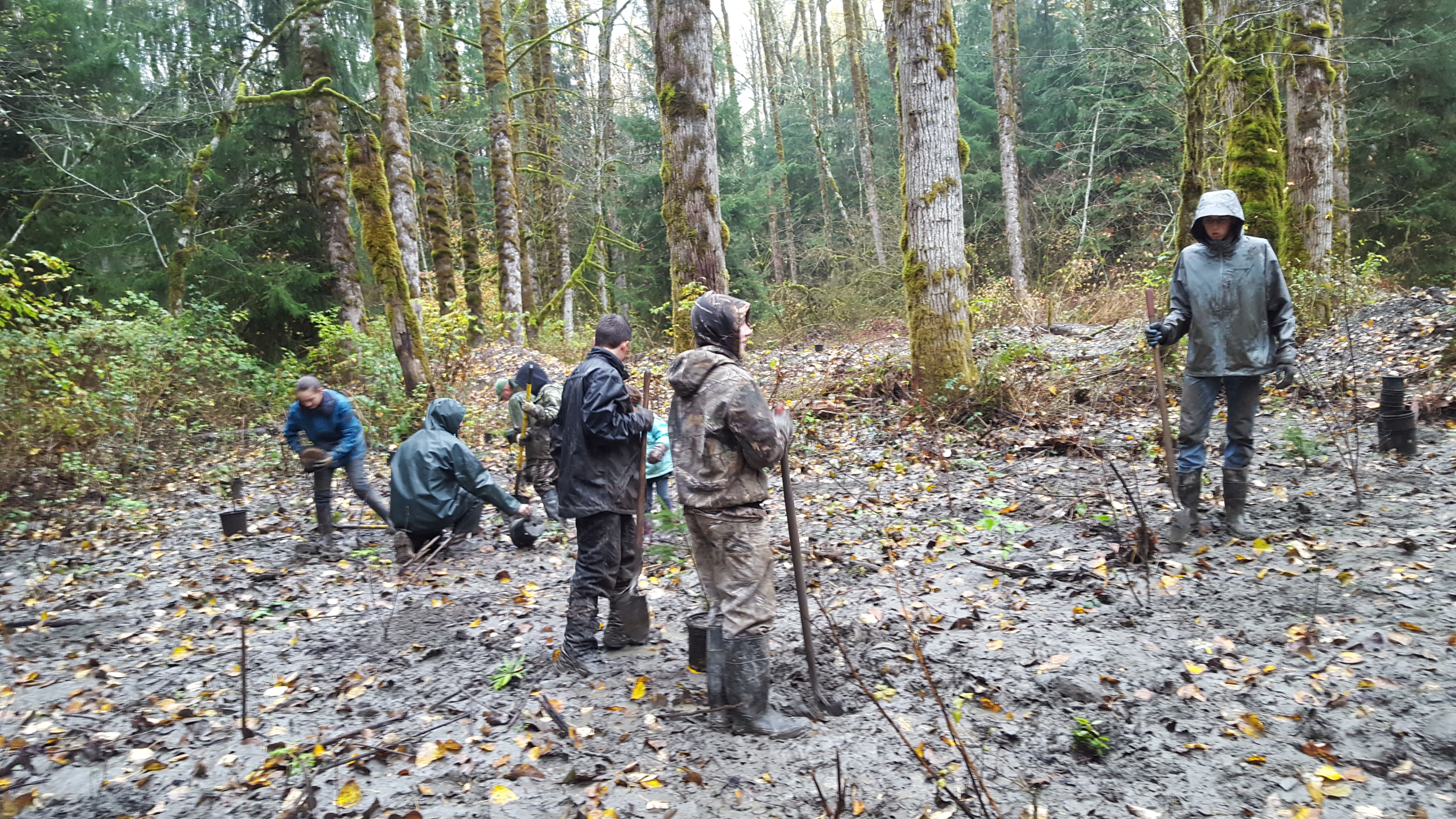
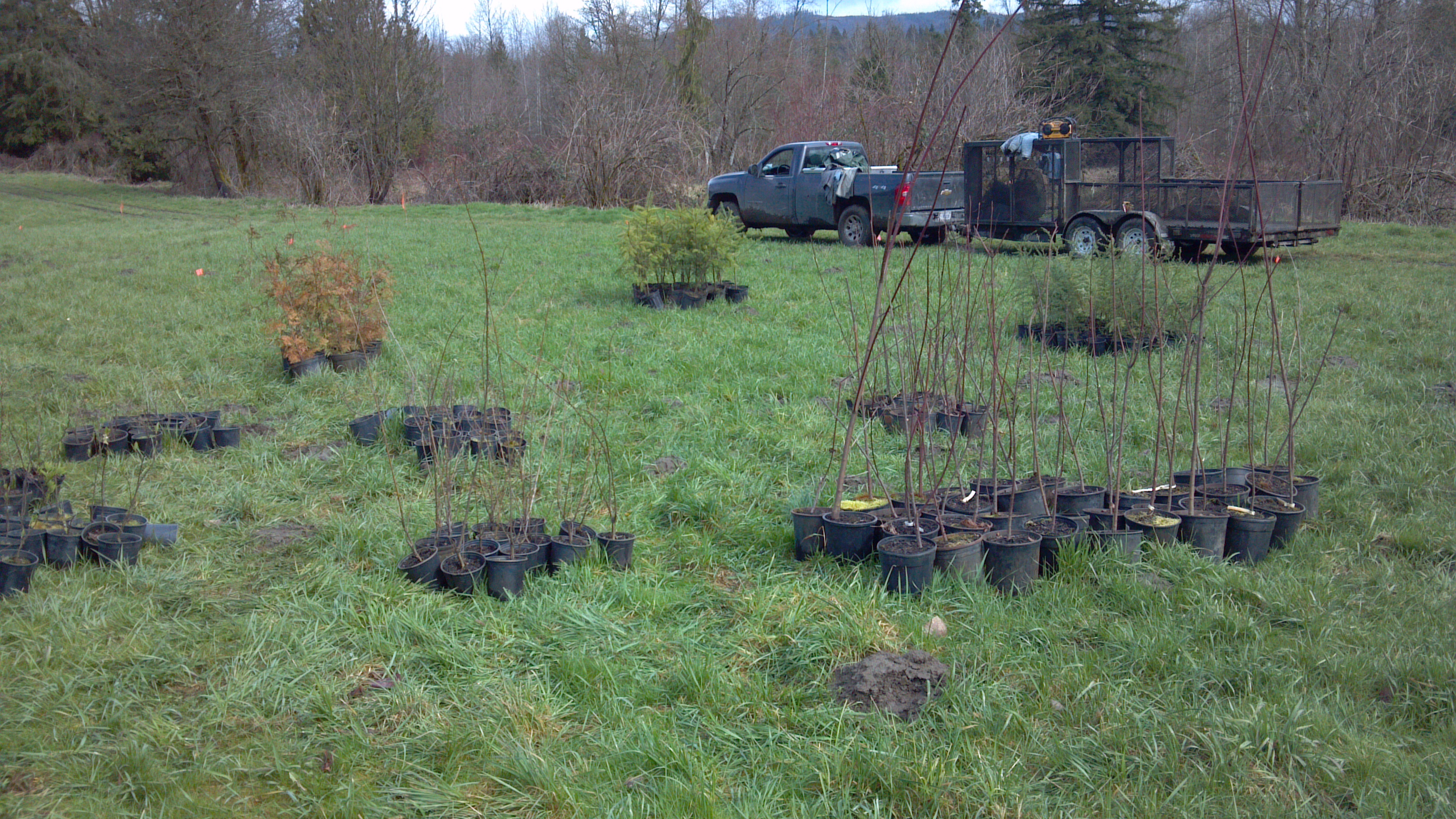
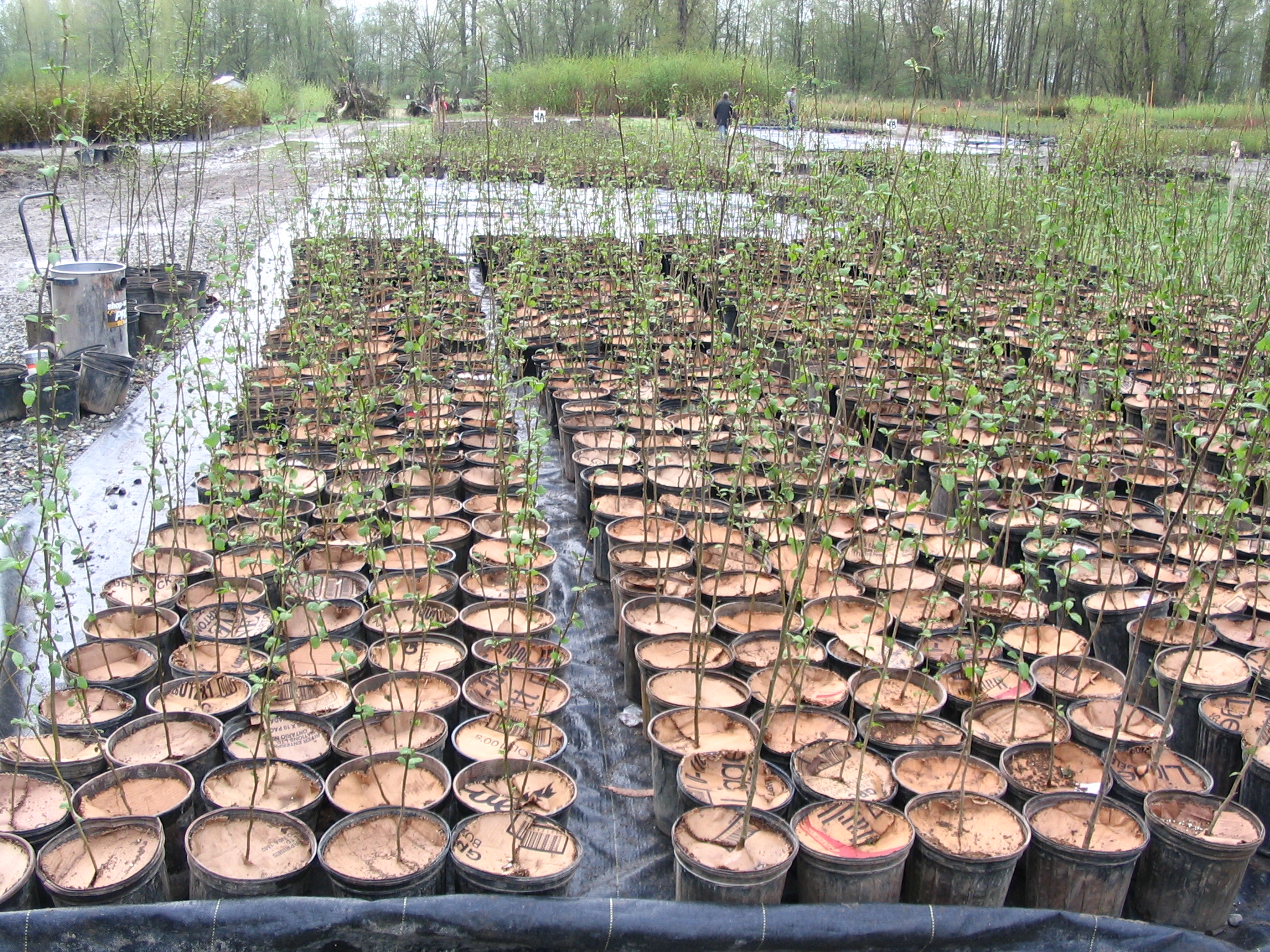
Wetland Projects
The objective of the wetlands program is to monitor wetlands and use that information to identify culturally important resources to enhance Tribal Treaty Rights, inform the Tribe’s future voluntary wetland restoration and protection goals and ultimately lead to an increase in the quality and quantity of wetlands.
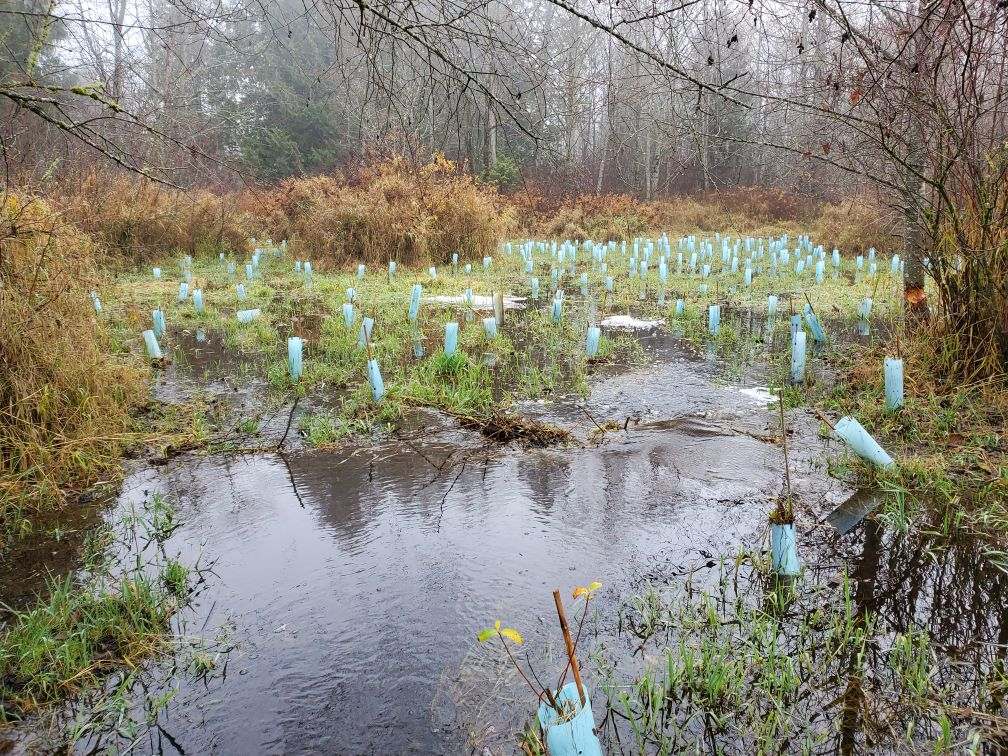
Instream Projects
Logjams provide crucial fish habitat. The pools created and sediment deposited by the formation of logjams create excellent spawning grounds for many species of salmon. These pools also provide cold-water refuge for fish during low water levels when other parts of a stream may be nearly dry as well as acting as velocity shelters during high-flow periods.
Historically, logjams occupied a large portion of Northwest river corridors. However, as settlers began to use rivers as shipping corridors, much of this large woody debris (LWD) was removed. The scientific consensus until the late 1980s was that wood was an impediment to salmon migration, but now we understand that, not only did salmon adapt under those conditions, they benefit from it.
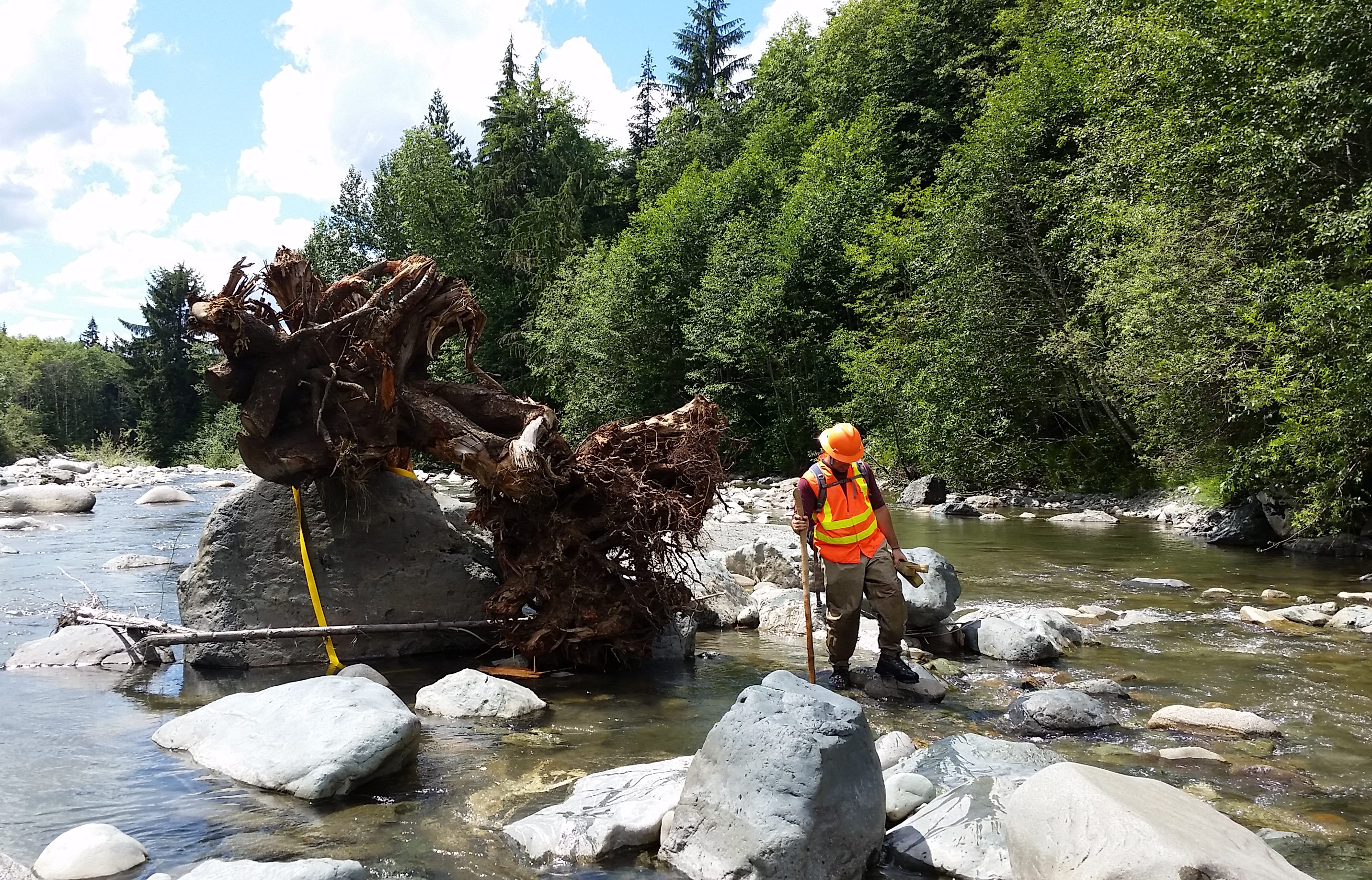
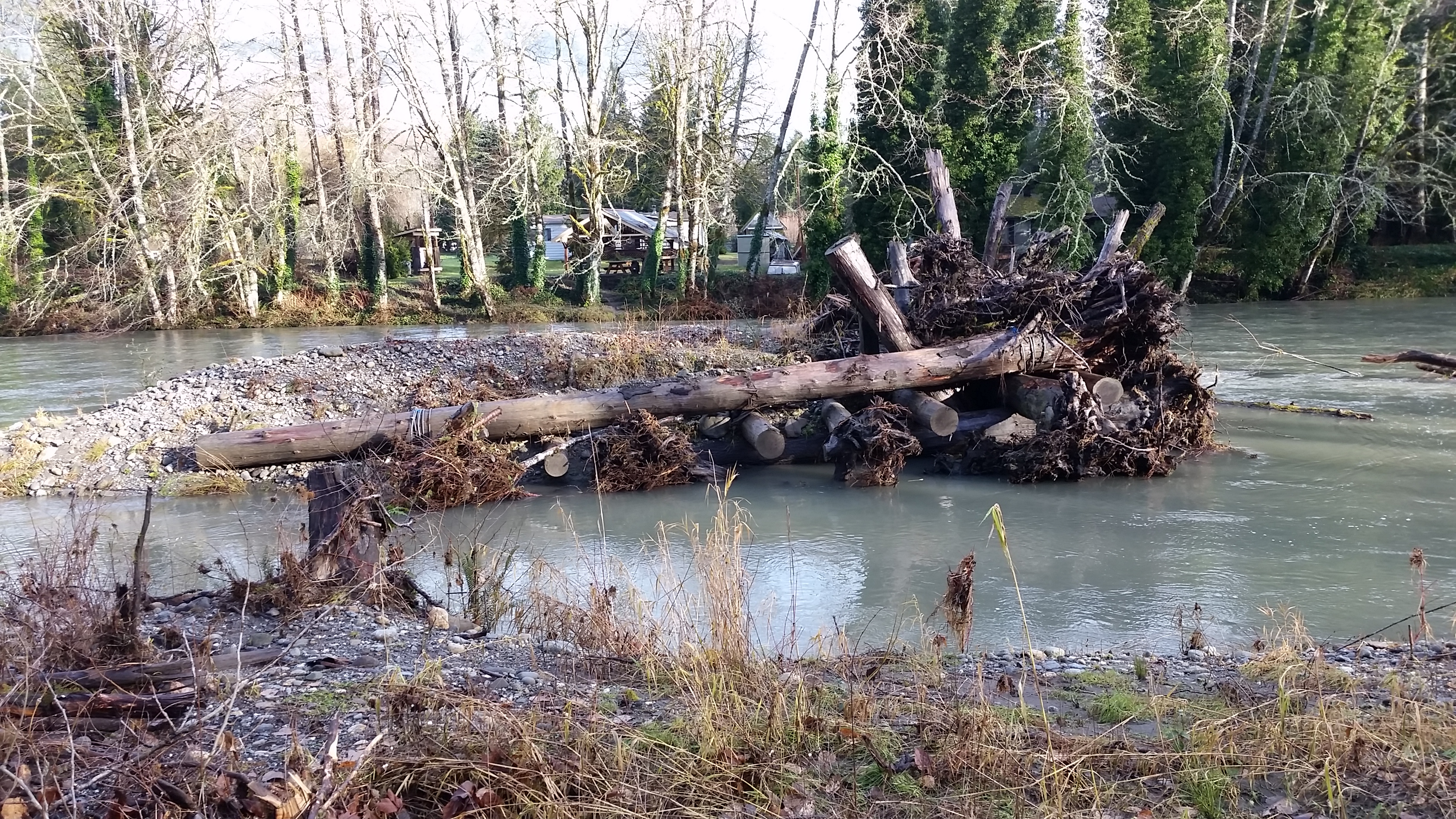
Estuary Projects
It is well documented that juvenile salmonids (ocean-type Chinook salmon in particular) depend on these estuarine wetlands as they transition from the freshwater to the marine stages of their life cycle (Lott 2004, Hood 2012). However, the vast majority of tidal forested wetlands and estuarine emergent marsh wetland habitats have been lost to diking, draining, development, and agriculture over the last 150 years (Griffith and Fuller 2013). By reconnecting these marshlands to tidal influence, additional rearing space becomes available to bolster the survival of juvenile salmonids.
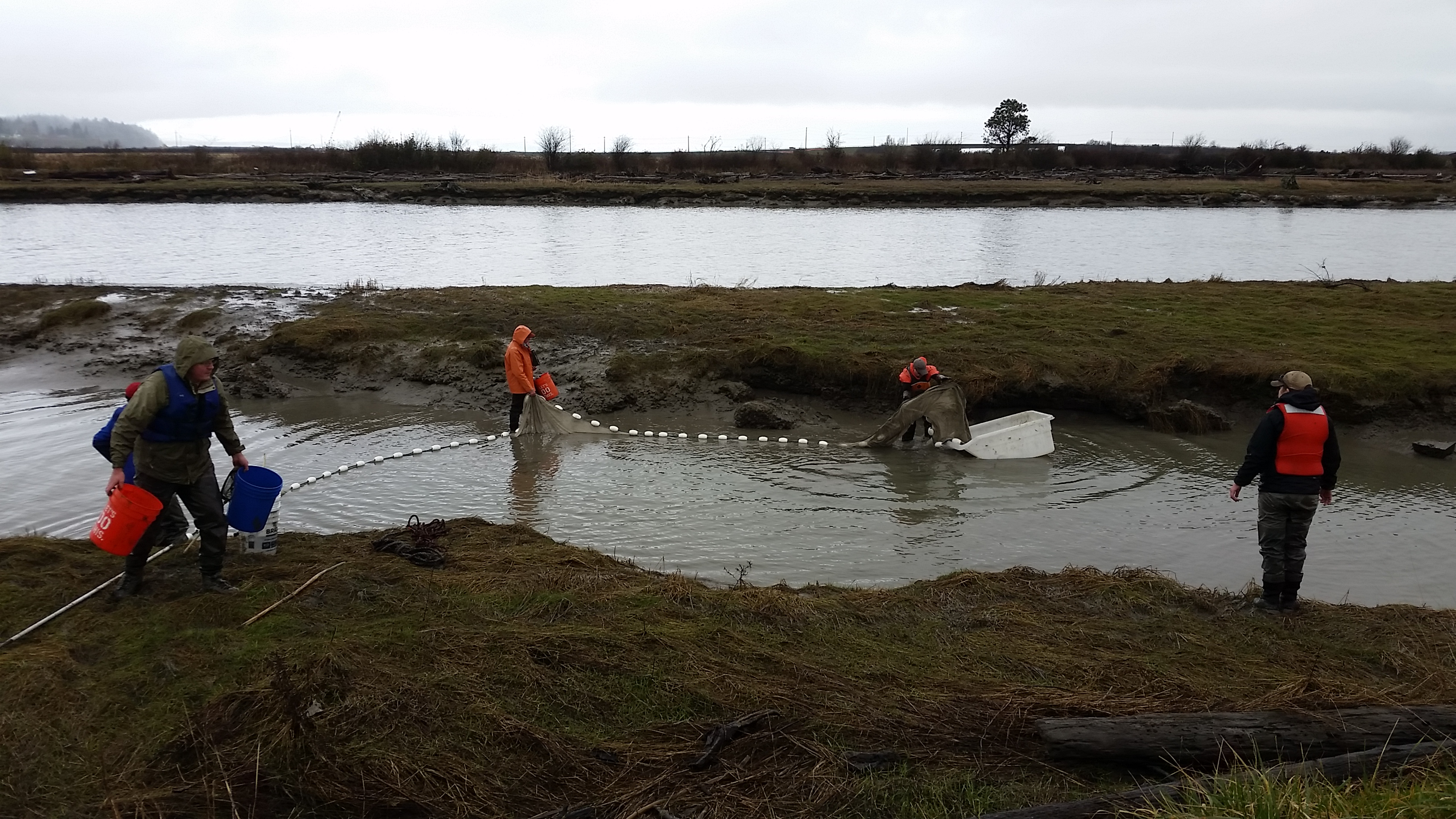
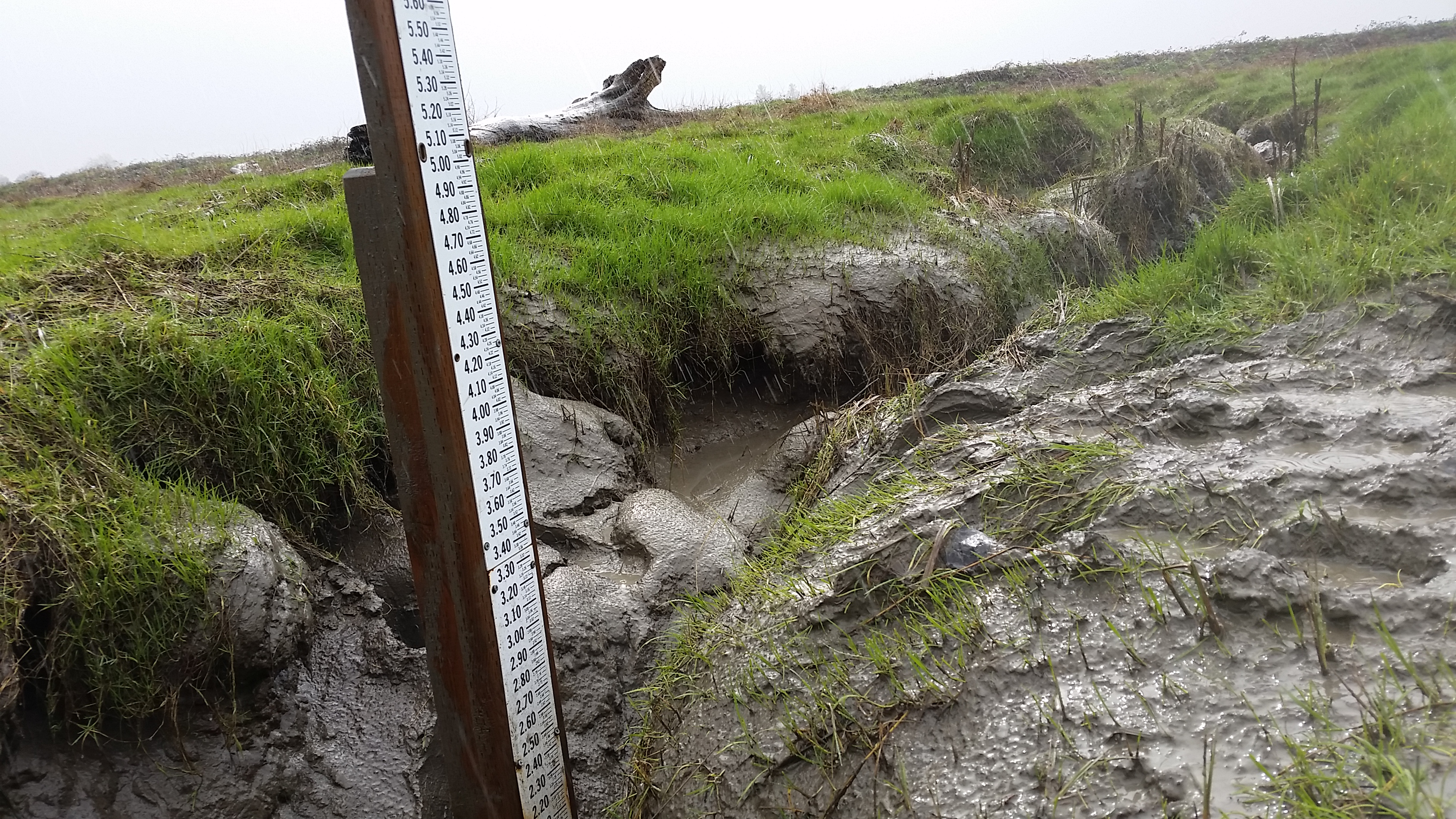
Conservation
Land Acquistion
Habitat restoration is critical to maintaining and enhancing cultural opportunities for Tribal members, however projects on private land are often limited and have no guarantee of longevity. Thus, the Stillaguamish Tribe has begun to focus on land acquisition as a means of habitat conservation.
Benefits of an acquisition strategy for conservation include:
1) Ensures protection from development in perpetuity
2) Allows for larger scale restoration projects that wouldn’t be practical on occupied land (e.g., bank armoring removal, floodplain reconnection)
3) Provides exclusive access to Tribal members to exercise their cultural practices (depending on the funding source)
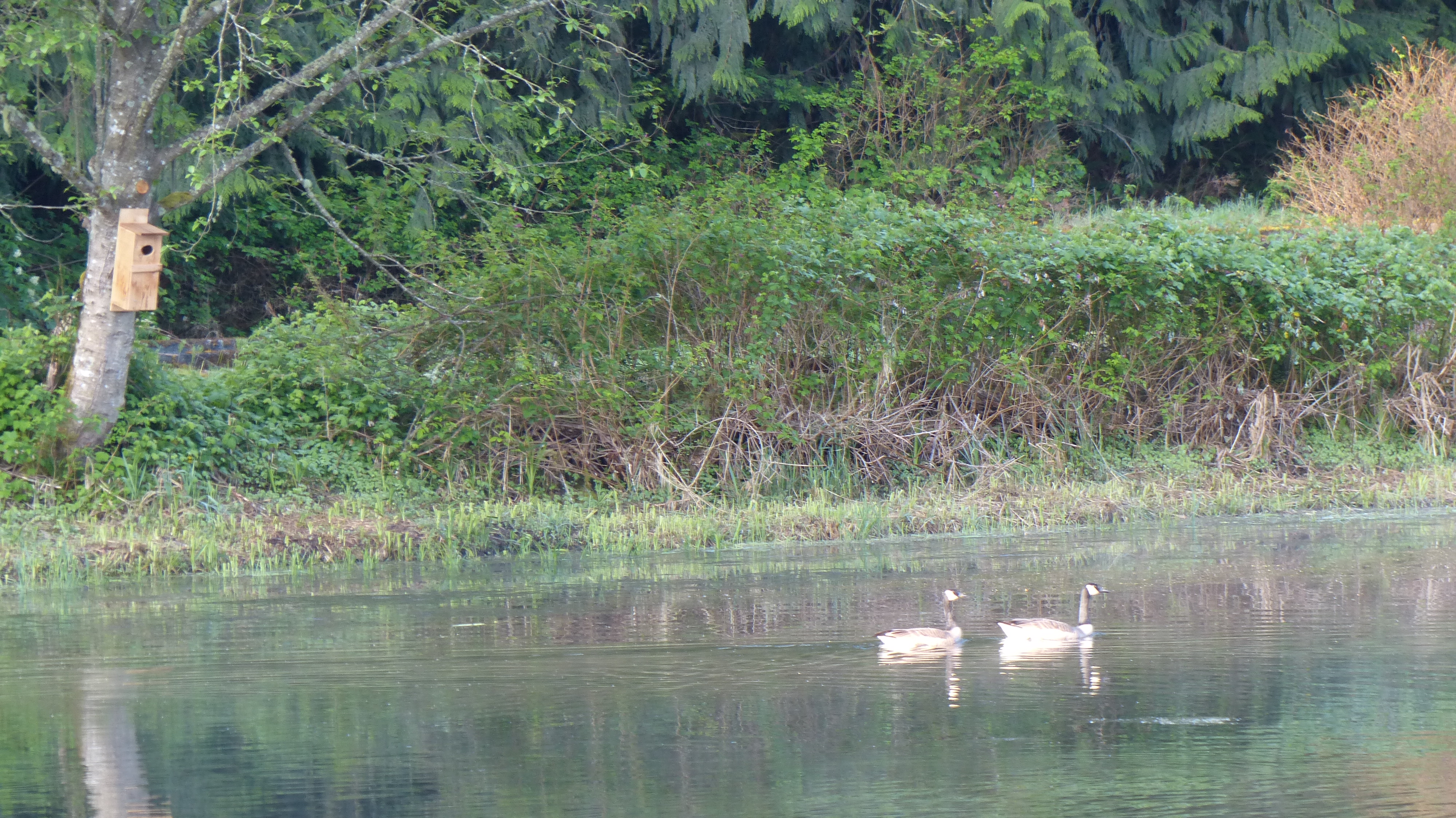
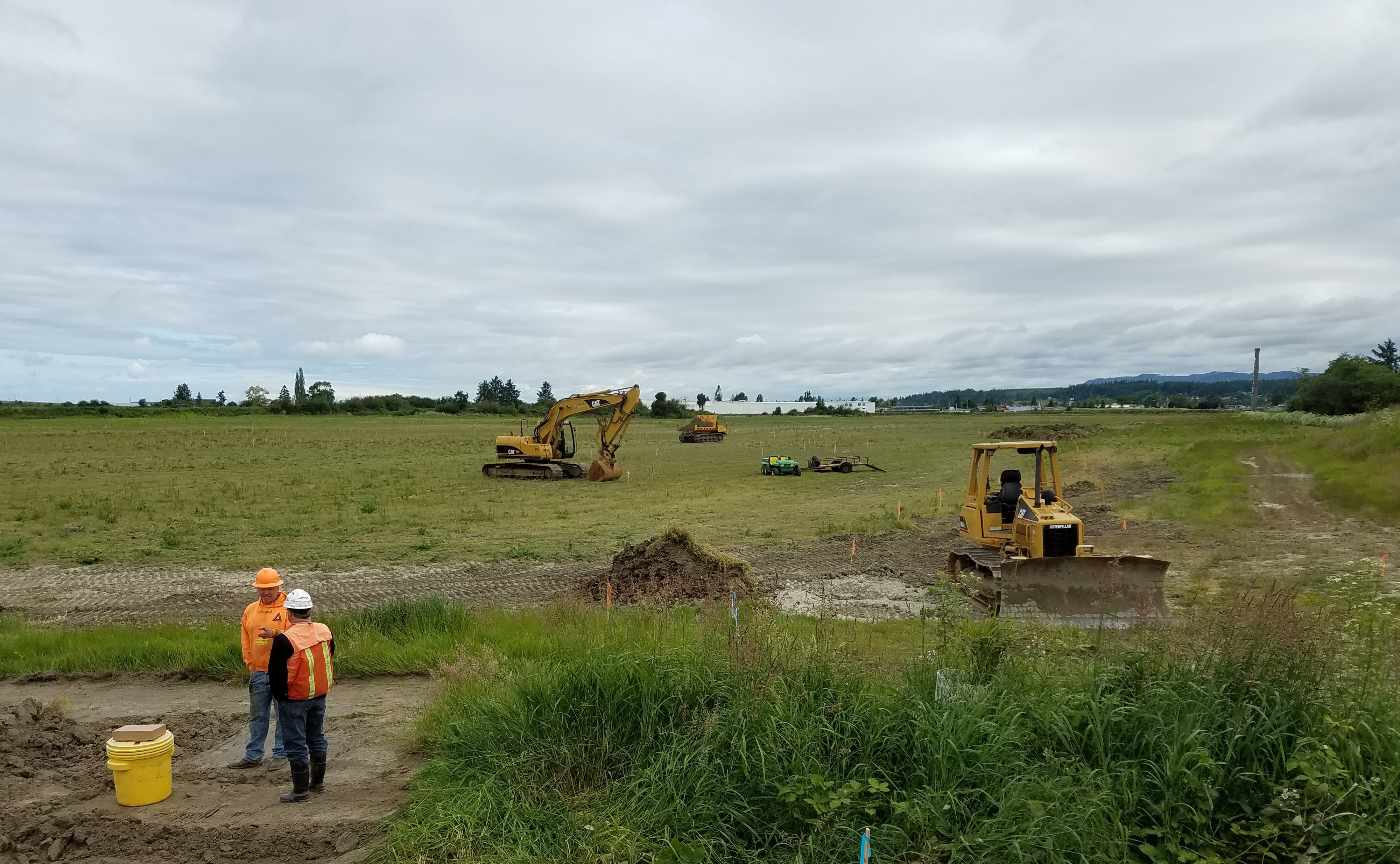
Protection
In addition to restoring and acquiring parcels for conservation, the Department also works to protect properties outside of Tribal control by ensuring existing regulations are properly implemented and enforced. This involves collaboration and occasionally confrontation with a variety of local, state, and federal rule-makers and enforcers. Fish and wildlife know no jurisdictional boundaries, therefore it is critical to protect the environment on and off Tribal land.
Timber, Fish and Wildlife
The 1974 federal court ruling (Boldt Decision) reaffirmed the rights of Tribes in Washington state to catch up to 50% of the harvestable surplus of fin fish based upon federal treaties signed in the 1850s. This ruling implied that Tribes have a vested interest in the intact habitat and clean water that produces the Treaty fishery, including habitat on forest lands.
As a result, the Natural Resources Department conducts both field and office reviews of proposed Forest Practices Applications within the Stillaguamish watershed and adjacent areas that may affect Treaty resources. This process often involves collaboration with industry, regulators, and other local stakeholders to guarantee timber harvest will not detrimentally affect Tribal resources.
For more information, please visit the Timber, Fish, and Wildlife Program page.


Policy Partnerships
The Tribe participates in several policy organizations aimed at protecting natural resources within the Stillaguamish Watershed. By collaborating with various stakeholders, the Department is able to increase support for projects restoring and preserving resources important to the Tribe.
Stillaguamish Watershed Council (SWC)
The mission of the SWC is to maintain a healthy, functioning Stillaguamish Watershed by providing a local forum in which agencies, organizations, communities, and the public can engage in a collaborative watershed based process of decision making and coordination.
https://www.stillaguamishwatershed.org/
Floodplains by Design
Floodplains by Design emphasizes collaboration by bringing various stakeholders to the table in order to plan a floodplain that benefits all parties.
Regulatory Review
As a sovereign government and steward of the natural environment, the Tribe reviews several categories of permits and project proposals to ensure compliance with existing regulations. Documents reviewed include but are not limited to Hydrologic Permits (HPAs), Forest Practice Applications (FPAs), projects subject to the State Environmental Policy Act (SEPA), select project proposals from the U.S. Army Corps of Engineers, and proposed changes to local, county, or state code that could detrimentally affect salmon habitat.
